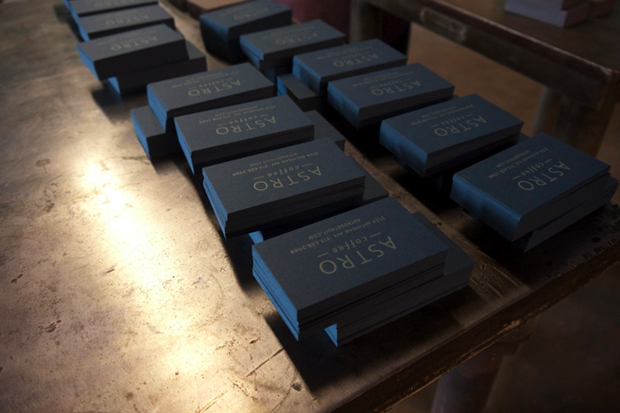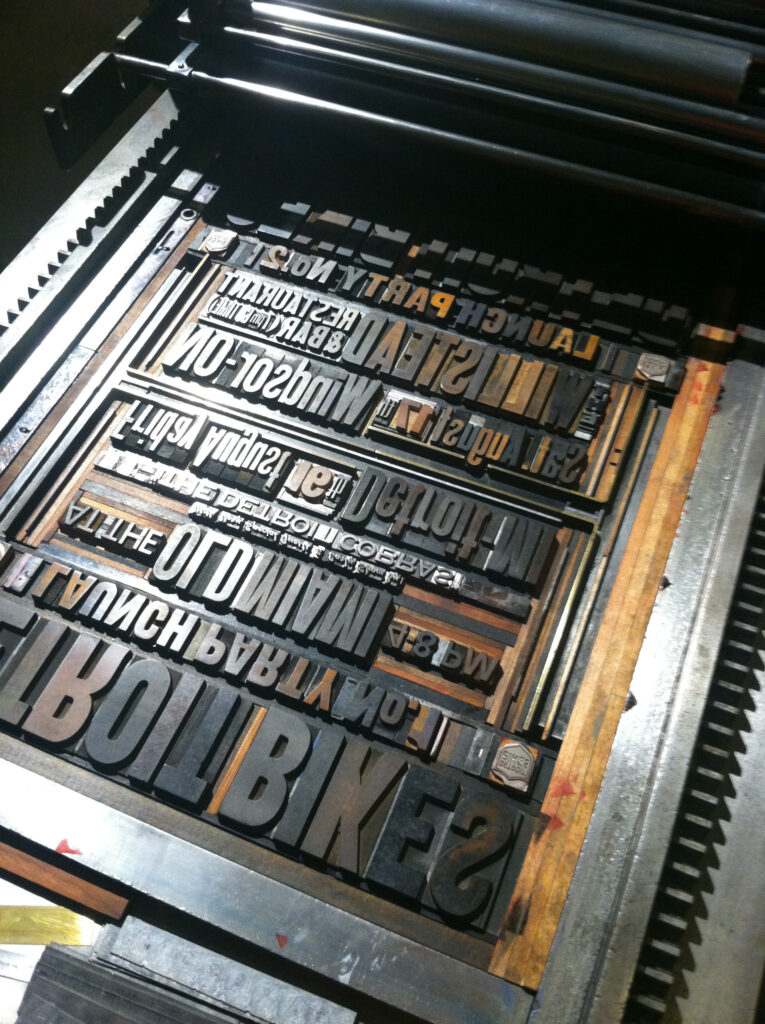Making Letterpress Prints
I love to print my own art and designs, but I also really enjoy using the equipment in my studio to do custom print collaborations. I work with all sorts of visual artists. musicians, poets, concert venues, small businesses, and individuals who simply want to create ephemera for a special occasion. I can brainstorm, develop projects, and fully make new designs for clients. I can also simply be hired to print pieces that are already in their final stages of realization, it is often exciting to work with designers and illustrators directly as their printer. Collaboration might come about with multiple people, such as with a bride-to-be and her best friend, who just happens to be a graphic designer. In many situations I play the role of the master printer, sharing advice and expertise while getting projects ready to go to press.
Making Multiples. Yep!
Rarely is making one of something is ever going to be cost-effective. One of the first questions about any upcoming project is going to about the number of prints that will be made. Most of the time and work for letterpress projects occurs during preparation and set-up. Sketches, design, typesetting, plate-making, carving, ink mixing, and proofing; all these things happen before the first good print is pulled off the press. Doing custom letterpress work is a bit like making a batch of cookies. If you want a special kind that has your unique combination of ingredients, it is only reasonable to get a whole batch, otherwise, you’ll be paying for all the design, setup and presswork to be held within one single unit. Edition sizes are commonly between 100 and 250, but there are of course projects that can warrant smaller or larger numbers. All of the work I do in the studio for people is custom and fit to suit their needs, there aren’t any templates being used so the work will always be fresh and new.
How much do things Cost?
I will tell you how much things will cost as soon as we both know what is going to get made. Project pricing can land somewhere between $175 and $1,750 Determining the cost of any project requires consideration of the materials, all the various aspects of labor required to set up, print, and finish the editions. Because every project is fully custom and totally unique, a quote for pricing can only be given after a short preliminary discussion.
Making it happen!
Once a design is finalized, and all the materials are ordered there is generally a two-week turnaround for projects of average size. The press schedule is the main determining factor. Short and simple runs can sometimes get sneaked onto a press between big projects, but same day printing is not really possible.
After all the design work is finished, and paper stock in hand, that is when the printing is actually ready to begin. The time it takes to complete the printing of a project depends mostly on the number of passes of color in a design, not the paper size. For example, a postcard with two colors on the front and two colors on the back will be going through the press 4 times – while a large poster with only two colors is going to take half as much time on the press.
How does the printing of an edition proceed? Well here is an example. For a two-color print, there will be two separate compositions created and used sequentially on the press. The first color of ink is put on the rollers with the corresponding portion of the design placed on the press bed, all of the sheets of paper for the whole edition are printed and put on the rack to dry. That first color of ink is then cleaned off the press. The compositional elements are exactingly rearranged on the press in anticipation of the next pass of ink which will usually happen the following morning after the first pass of ink has dried. The prints are then all cranked through the press again using the second color and put on the rack to dry again. On the third day, prints are stacked and given their final trim on the guillotine paper cutter.


